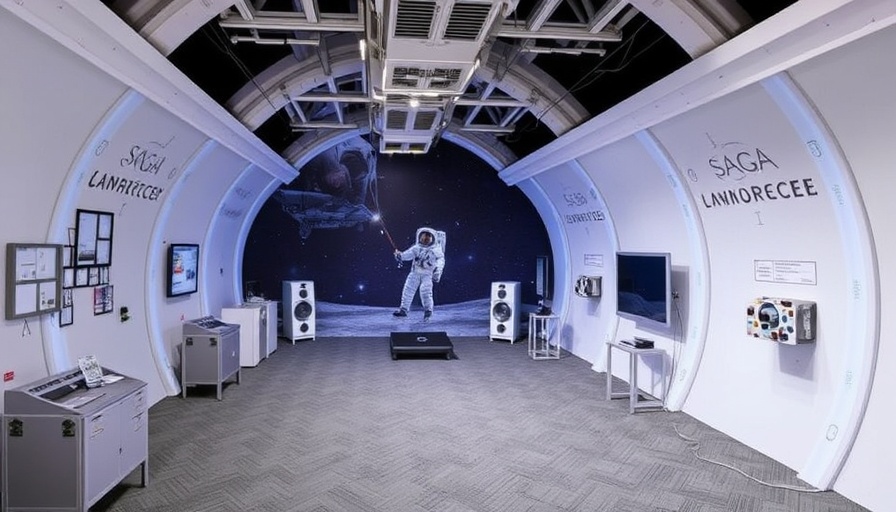
Designing for Lunar Living: SAGA's Mission
The recent completion of SAGA's astronaut training habitat provides a fascinating glimpse into how habitats for moon missions are designed to simulate actual lunar living conditions. Known as FlexHab, this innovative facility, developed in collaboration with the European Space Agency (ESA) and the German Aerospace Center (DLR), aims not only to prepare astronauts for their journeys beyond Earth but also to shed light on how we can evolve our living spaces here on our planet.
Creating Ergonomic Spaces in Extreme Environments
As remote work becomes increasingly common, the design principles behind FlexHab can offer valuable insights for digital nomads looking to create comfortable and efficient workspaces. The habitat incorporates ergonomic solutions that cater to a wide range of human activities, from sleep to work to recreation. In extreme environments like space, ergonomics is vital; astronauts need spaces that enable them to work productively, stay healthy, and maintain a positive mindset in isolated conditions.
The Relevance of Simulated Environments
FlexHab’s capacity to mimic the physical and psychological challenges of moon living can translate well to our living and working environments on Earth. FlexHab includes modular spaces that can be easily customized—much like how digital nomads can tailor a workspace to fit their unique needs. The facility has aspects like space-efficient furniture, adjustable workstations, and areas for physical activity that resonate with those who work from varied locations. These features not only enhance productivity but also support wellness, which is critical for the remote working community.
Future Insights: What FlexHab Means for Workspace Innovation
As the interest in lunar exploration grows, so does the potential for innovation in workspace design. The learnings from FlexHab could lead to longer-term applications on Earth, especially in how we navigate small space living and remote work. The modular design and focus on promoting physical and mental wellbeing implement essential principles of ergonomics that digital nomads can adopt. Given the link between workspace design and productivity, implementing these insights can lead to a more satisfying remote work experience.
Embracing the Necessity of Adaptable Spaces
In today’s fast-paced world, the need for adaptable spaces has never been greater. Spaces that can effortlessly transition between uses are crucial for ensuring comfort and efficiency. FlexHab teaches us about the importance of flexibility, emphasizing that whether in outer space or working from home, environments that are responsive to our needs are vital for well-being. It encourages digital nomads to think critically about their surroundings, leveraging ergonomic design for better productivity and comfort.
Conclusion: The Call for Ergonomic Awareness
With the changes in how we work, it becomes increasingly important to consider our environments thoughtfully. By taking inspiration from pioneering facilities like FlexHab, we can significantly improve our workspace experiences and overall well-being. The insights gained from SAGA’s innovative training facility serve as a reminder that as our lifestyle evolves, so too must our approach to designing our workspaces. Adopting ergonomic solutions not only boosts productivity but also enhances our quality of life. So, as you create or adapt your workspace, consider how ergonomic design principles can be applied to make a positive impact on your work and health.
 Add Row
Add Row  Add
Add 




Write A Comment